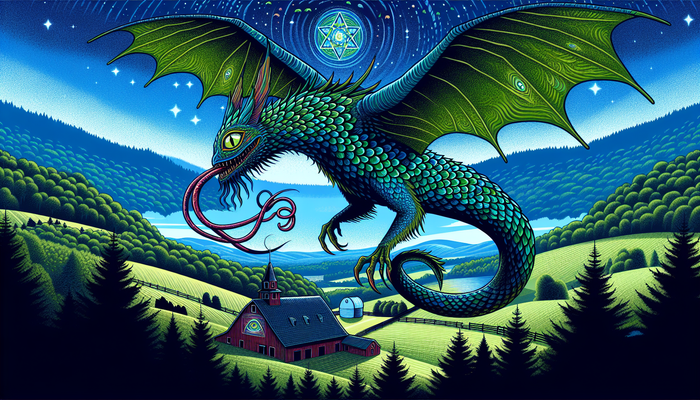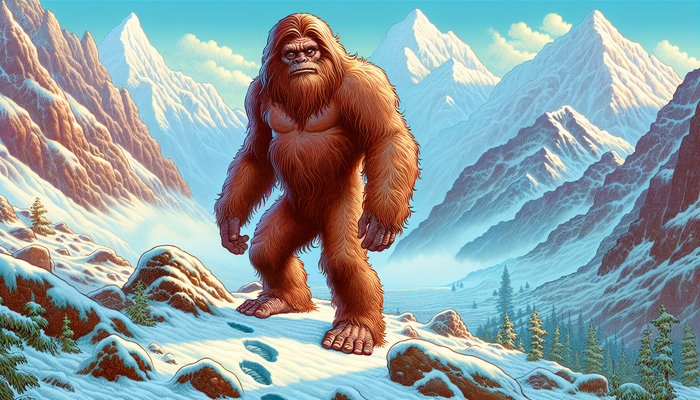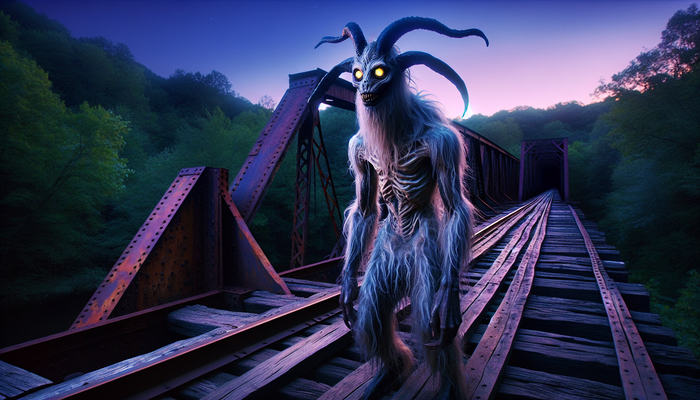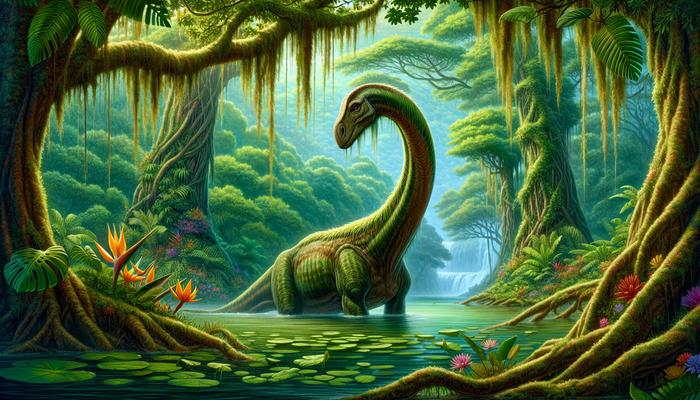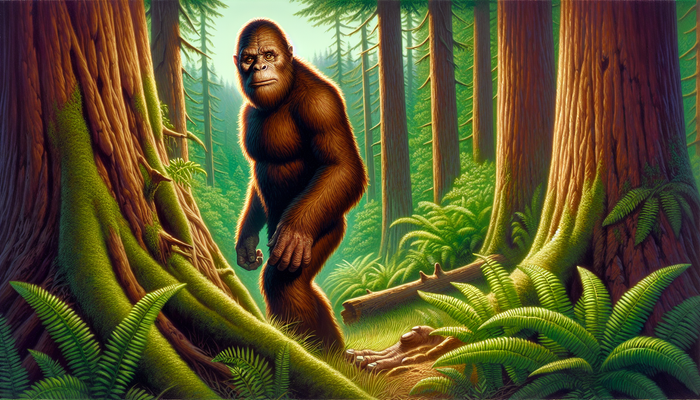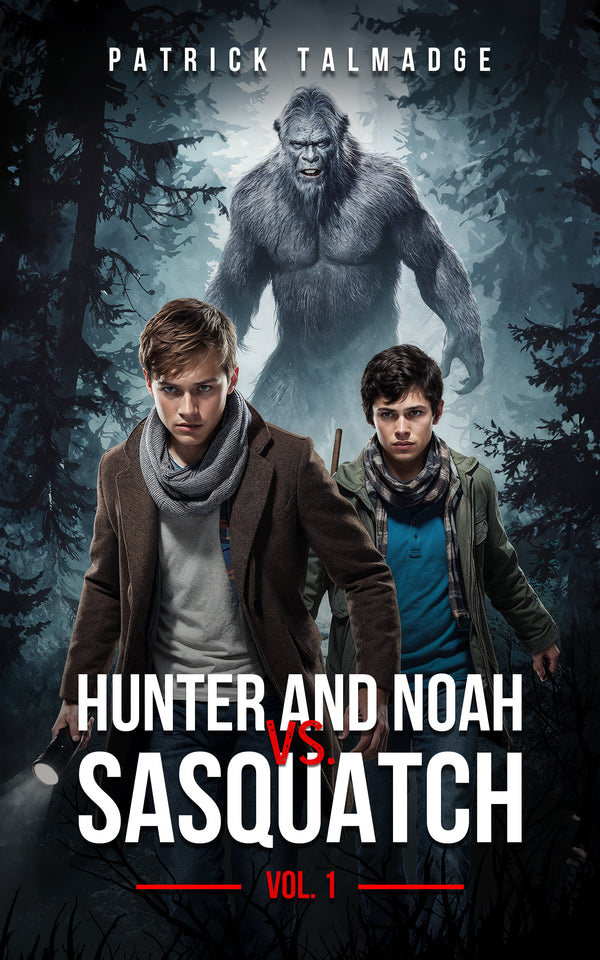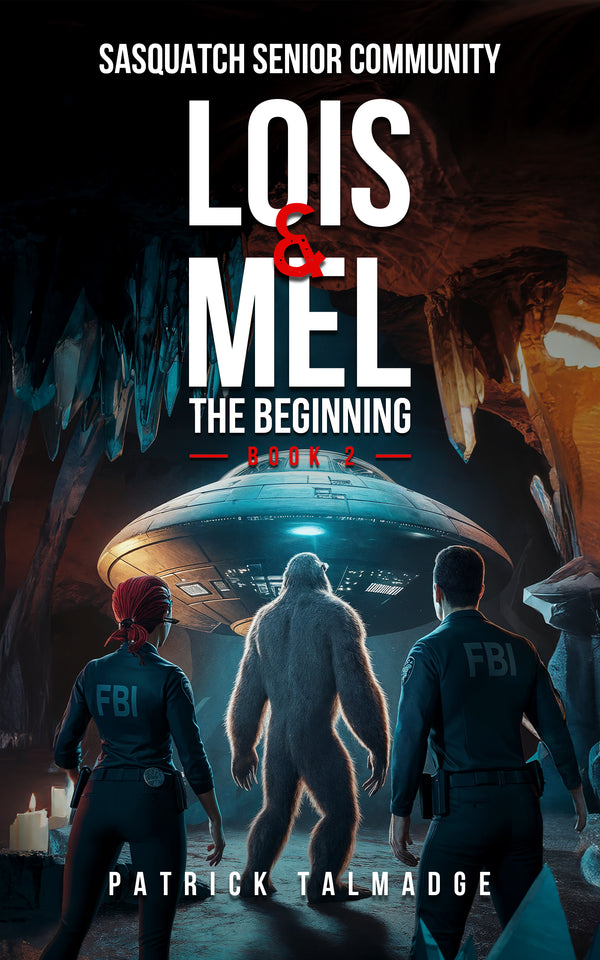Legends of the Wild West: Wyoming Cryptids
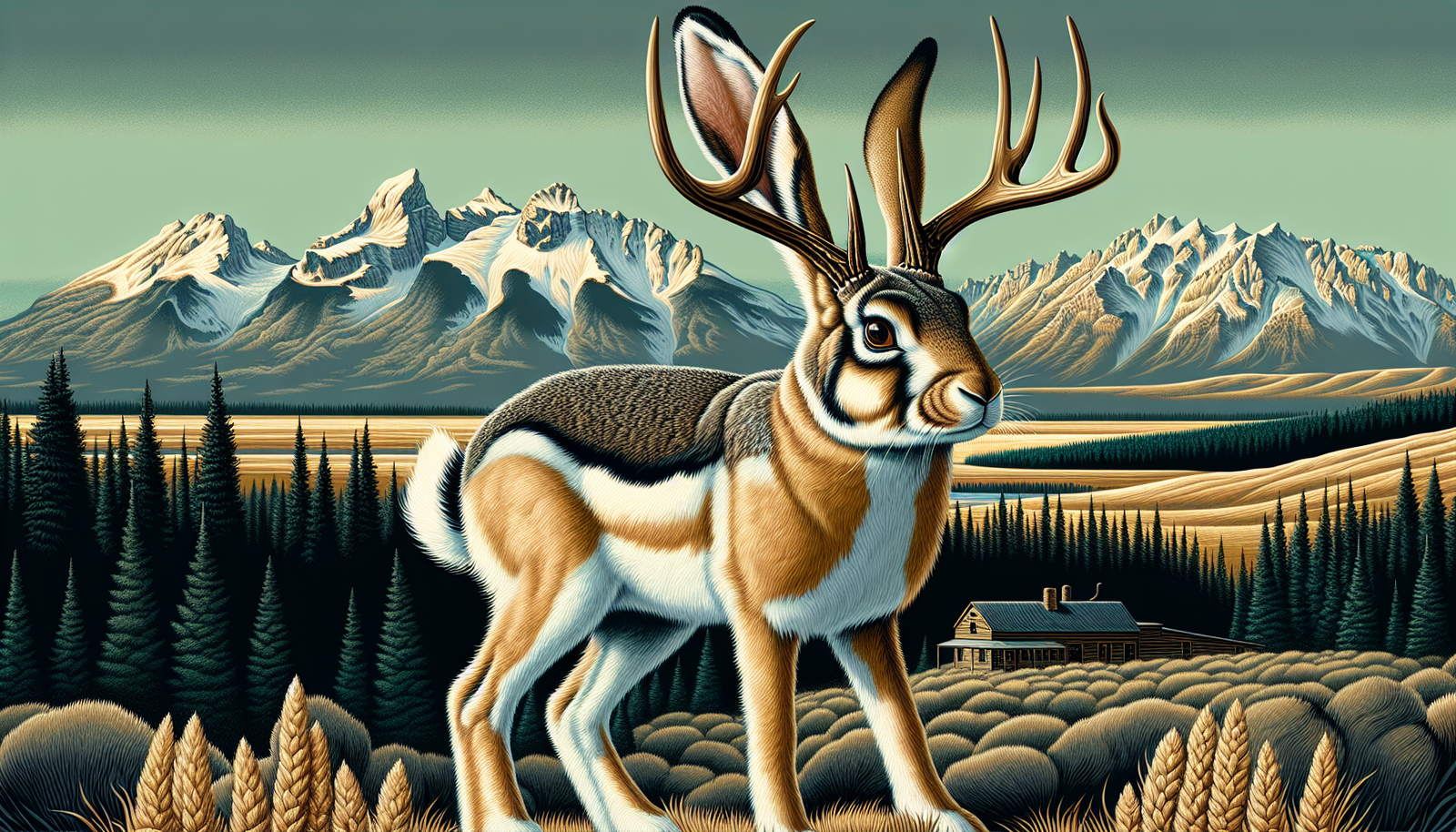
By Jack Sullivan, Cryptozoologist
In the vast expanses of the American West, where rugged mountains meet endless prairies and dense forests conceal untold secrets, the allure of the unknown has captivated the imaginations of generations. Among the many states that make up this wild and untamed region, Wyoming stands out as a true hotspot for cryptid sightings and legends. From the iconic jackalope to the enigmatic Shunka Warakin, the Cowboy State is home to a rich tapestry of mysterious creatures that have left an indelible mark on its history and culture.
As a dedicated researcher and cryptozoology enthusiast, I have long been fascinated by the tales of Wyoming's legendary beasts. Over the years, I have delved deep into the archives, conducted extensive field investigations, and interviewed countless witnesses in my quest to unravel the mysteries surrounding these elusive creatures. What I have discovered is a world of wonder and intrigue, where the lines between myth and reality often blur, and where the impossible seems tantalizingly within reach.
The Iconic Jackalope: A Legend Born in Douglas
Perhaps no cryptid is more closely associated with Wyoming than the jackalope, a mythical hybrid of a jackrabbit and an antelope. The origins of this peculiar creature can be traced back to the small town of Douglas in the 1930s, where two enterprising brothers, Douglas and Ralph Herrick, created a taxidermy hoax that would go on to capture the imagination of the nation.
The story goes that the Herrick brothers, who were skilled taxidermists, decided to play a prank on their unsuspecting customers by attaching a pair of deer antlers to a mounted jackrabbit head. Little did they know that their creation would soon take on a life of its own, sparking a cultural phenomenon that would spread far beyond the borders of Wyoming.
As word of the jackalope spread, so too did the tall tales surrounding its supposed abilities. Some claimed that the creature possessed incredible speed and agility, able to outrun even the swiftest of predators. Others spoke of its uncanny ability to mimic human voices, luring unsuspecting prey into its clutches with eerie calls in the night. And then there were the whispers of the aphrodisiac properties of jackalope milk, a substance so potent that it was said to drive men wild with desire.
But while the jackalope may have started as a hoax, there is evidence to suggest that the legend may have some basis in reality. In rare cases, rabbits can become infected with the Shope papilloma virus, which causes horn-like growths to appear on their heads and bodies. These "horned rabbits" may well have been the inspiration behind the jackalope myth, providing a tantalizing glimpse into the natural world that lies behind the legend.
Interestingly, the study of the Shope papilloma virus in rabbits has led to some groundbreaking scientific discoveries. Researchers have found that the virus can cause certain types of cancers in rabbits, shedding light on the viral origins of some human cancers as well. This work has even paved the way for the development of the HPV vaccine, a medical breakthrough that has the potential to save countless lives. Who would have thought that a mythical creature like the jackalope could be connected to such important scientific advancements?
The Enigmatic Shunka Warakin: A Beast of Native American Legend
Deep in the wilderness of Wyoming and Montana, another legendary creature stalks the shadows. Known as the Shunka Warakin, this enigmatic beast has long been a part of Native American folklore, described as a massive, wolf-like creature that walks upright on two legs and possesses features reminiscent of both canines and primates.
According to Shoshone legend, the Shunka Warakin's name translates to "carries off dogs," a reference to its supposed habit of snatching up unwary pets and livestock. Sightings of the creature have been reported for centuries, with many describing it as a fearsome predator with glowing eyes and a bone-chilling howl that echoes through the night.
One of the most famous alleged encounters with the Shunka Warakin occurred in the 1880s, when a group of frontiersmen claimed to have shot and killed a specimen in the Yellowstone area. The body, which became known as the "Ringdocus," was supposedly preserved and put on display, offering tantalizing proof of the creature's existence. However, like so many cryptid tales, the evidence eventually vanished, leaving behind only rumors and speculation.
Despite the lack of physical proof, sightings of upright, wolf-like creatures continue to this day. In the northeastern part of Wyoming and around the city of Cheyenne, sporadic reports of "dogman" encounters have surfaced over the years. One particularly chilling account comes from 1992, when a high school student claimed to have seen a "werewolf" while driving at night near Cheyenne. According to the witness, the creature had glowing yellow eyes that reflected in the headlights and ran off on two legs after being spotted.
While skeptics may dismiss these sightings as misidentifications or hoaxes, the persistence of the Shunka Warakin legend suggests that there may be more to the story than meets the eye. Could there be an undiscovered species of upright canine roaming the wilderness of Wyoming and Montana? Or are these tales simply the product of overactive imaginations and the human fascination with the unknown? The truth, as is so often the case with cryptids, remains elusive.
Smetty: The Serpentine Monster of Lake DeSmet
From the mountains and forests of Wyoming, we turn our attention to the murky depths of its lakes, where yet another legendary beast is said to lurk. In Johnson County, the serene waters of Lake DeSmet are home to a serpentine monster known as Smetty, a creature that has captured the imaginations of locals and visitors alike for generations.
The origins of the Smetty legend can be traced back to the early days of frontier settlement, when Native Americans first warned of a fearsome creature that inhabited the lake. According to their stories, Smetty was known to snatch unsuspecting victims from the shore, dragging them down into the watery depths never to be seen again.
One particularly tragic tale tells of a Native American woman who left her baby in a papoose on the shore while she was busy skinning rabbits nearby. Suddenly, a massive creature burst forth from the water, seizing the infant and disappearing beneath the surface in a flash. The distraught mother could only watch in horror as her child was taken by the beast, a grim reminder of the dangers that lurked in the untamed wilderness.
As more settlers began to arrive in the area, sightings of Smetty continued to mount. Many described the creature as an enormous, serpentine beast, measuring up to 40 feet in length and as thick as a tree trunk. Some claimed to have seen it with a head resembling that of a horse or an alligator, its massive jaws lined with razor-sharp teeth.
One of the most detailed accounts of Smetty comes from a 1925 book by Edward Gillette, a railroad surveyor who collected stories from the early settlers of the region. In his book, Gillette describes a creature "as long as a telephone pole (30-40 feet) with a huge bucket for a head," its horse-like visage rising from the water to strike fear into the hearts of all who saw it.
Over the years, speculation has run rampant about the true nature of Smetty. Some cryptozoology enthusiasts have suggested that the creature could be a relic population of plesiosaurs, marine reptiles that went extinct millions of years ago. They point to the isolated nature of Lake DeSmet and its murky depths as potential factors that could have allowed such a creature to survive undetected for so long.
Skeptics, of course, offer more mundane explanations for the Smetty legend. They argue that sightings of the creature can likely be attributed to misidentifications of known animals, such as large fish or even floating logs, combined with the human penchant for exaggeration and embellishment. After all, the mind has a way of playing tricks on us, especially in the eerie stillness of a remote lake at night.
Regardless of the truth behind the legend, there is no denying the hold that Smetty has on the imaginations of those who have heard its tale. Even today, visitors to Lake DeSmet may find themselves peering out over the water, half-expecting to catch a glimpse of a serpentine form breaking the surface or a pair of glowing eyes staring back at them from the depths.
Yellowstone's Mysterious Siren: A Deadly Encounter
While Wyoming's cryptid legends often have their roots in Native American folklore or frontier-era tall tales, sometimes a more modern story emerges that captures the public's attention. Such is the case with the mysterious siren said to haunt the thermal pools of Yellowstone National Park.
In 2016, a strange and tragic incident occurred at one of Yellowstone's hot springs, sparking rumors of a deadly encounter with an otherworldly being. According to a third-hand account from a park ranger, a man had fallen into the scalding water and was allegedly pulled to his death by a humanoid creature.
The ranger claimed that the victim's sister, who had witnessed the event, described seeing a nude, white-haired figure with translucent skin floating above the water. This siren-like being was said to have lured the man to his doom with an eerie, hypnotic humming sound, its ethereal voice drawing him closer until it was too late.
While the story may sound like something out of a horror movie, it taps into a long history of Native American legends and tales of paranormal activity within the geothermal wonderland of Yellowstone. For centuries, the park's bubbling mud pots, hissing fumaroles, and rainbow-hued hot springs have been imbued with spiritual significance by the tribes who called this land home.
Some have speculated that the alleged siren could be a manifestation of these ancient beliefs, a ghostly echo of the past that still lingers in the steam-filled valleys and geyser basins. Others point to the many documented cases of people falling victim to Yellowstone's unforgiving thermal features, suggesting that the story of the siren may be a cautionary tale born of tragedy and loss.
Regardless of the truth behind the tale, the legend of Yellowstone's deadly siren serves as a reminder of the raw power and mystery that still exists in the untamed corners of the American West. It is a place where the lines between the natural and the supernatural can blur, where ancient myths and modern fears collide in the shimmering heat of a geothermal pool.
Bigfoot in the Wyoming Wilderness: Encounters with an Elusive Legend
No discussion of Wyoming cryptids would be complete without mentioning the most famous of them all: Bigfoot. This legendary ape-like creature, also known as Sasquatch, has been spotted in nearly every corner of the state, from the dense forests of the Medicine Bow Mountains to the rugged peaks of the Wind River Range.
One of the most dramatic Bigfoot encounters in Wyoming occurred in 1972, when a biologist camping solo in the Wind River Mountains claimed to have had a terrifying nighttime encounter with the creature. According to the biologist's account, he was awakened by a loud slap on the side of his tent, followed by the sound of heavy footsteps retreating into the darkness.
Startled and afraid, the biologist grabbed his flashlight and peered out into the night, but saw nothing. Moments later, however, he heard a rustling in the trees nearby and suddenly found himself being pelted with pinecones from an unseen assailant. The attack continued for several minutes, with the creature seemingly toying with the frightened man, before finally retreating back into the forest.
While some may dismiss this story as a product of fear and imagination, it is far from the only Bigfoot encounter reported in Wyoming. In fact, sightings of the elusive creature have been documented throughout the state for decades, with many witnesses describing a large, hairy, bipedal animal that leaves behind massive footprints and emits a foul, musky odor.
More recently, in 2014, a group of researchers using an aerial drone in Yellowstone National Park managed to capture several minutes of footage showing what appears to be a family of Bigfoot-like creatures stalking a herd of bison. The video, which quickly went viral online, shows a group of dark, upright figures moving through the trees, seemingly unaware of the drone hovering overhead.
While the footage is certainly intriguing, it remains inconclusive due to the distance and quality of the video. Skeptics argue that the figures could easily be misidentified bears or even human hikers, while Bigfoot enthusiasts point to the creatures' upright posture and curious behavior as evidence of their authenticity.
Regardless of one's personal beliefs, there is no denying the hold that Bigfoot has on the imaginations of people in Wyoming and beyond. The idea of a large, undiscovered primate roaming the wilderness taps into something primal within us, a longing for mystery and wonder in a world that often feels all too explainable.
For many, the search for Bigfoot is not just about proving the creature's existence, but about the thrill of the hunt itself. It is a chance to venture into the unknown, to test one's skills and courage against the vast, untamed wilderness of the American West. And if, along the way, a lucky few manage to catch a glimpse of something truly extraordinary, well, that is just the icing on the cake.
The Nimerigar: Tiny, Fierce Humanoids of Legend
Not all of Wyoming's cryptids are towering beasts or serpentine monsters. In fact, one of the most intriguing legends to come out of the state involves a race of tiny, fierce humanoids known as the Nimerigar.
According to Native American folklore, the Nimerigar were a diminutive people, standing no more than a few feet tall, but possessed of great strength and cunning. They were said to inhabit the remote corners of Wyoming, particularly the Wind River and Pedro Mountain ranges, where they fiercely guarded their territory against any intruders.
The Nimerigar were described as skilled warriors, armed with poisoned arrows and capable of bringing down even the largest of prey. Some stories even suggest that they had the power to control the weather, summoning fierce storms or blinding blizzards to confuse and disorient their enemies.
Despite their small size, the Nimerigar were feared by the other tribes of the region, who gave them a wide berth and avoided their lands whenever possible. It was said that to cross paths with a Nimerigar was to invite certain death, as they would attack without warning or mercy.
Interestingly, the legend of the Nimerigar gained a bit of credence in the 1930s, when a pair of gold prospectors stumbled upon a bizarre discovery in the Pedro Mountains. While digging for their fortune, the men unearthed a tiny, mummified corpse, measuring just over six inches in length.
The so-called "Pedro Mountain Mummy" caused quite a stir when it was first revealed to the public, with many speculating that it could be the remains of a Nimerigar warrior. The mummy's small size and strange, almost humanoid features seemed to lend credence to the old Native American tales, and for a time, it was hailed as proof of the legendary race's existence.
From Bigfoot to UFOs: Hangar 1 Publishing Has You Covered!
Explore Untold Stories: Venture into the world of UFOs, cryptids, Bigfoot, and beyond. Every story is a journey into the extraordinary.
Immersive Book Technology: Experience real videos, sights, and sounds within our books. Its not just reading; its an adventure.


